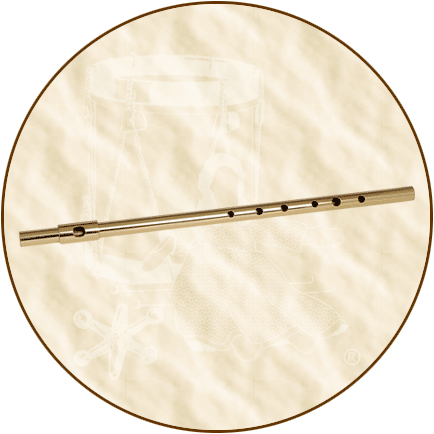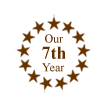.
Continued from product description on
Folk Instruments' Page Three...
Historical
Background: Music has been used to signal soldiers and
regulate an army for centuries. Fifes and drums were used to
instruct soldiers in war as well as in peacetime. They told soldiers
when they should awake, fall into formation, eat, go to bed,
and signal movements before battle or during military ceremonies.
During the American Revolution, the Continental Army adopted
21 beats and signals. These were standardized by a Prussian-born
assistant to General George Washington, Baron Friedrich von Steuben.
Von Steuben's regulations listed nine beats: The Assembly, The
General, The March, The Parley, The Retreat, The Reveille, The
Tattoo, The Troop, and To Arms. These regulations also prescribed
12 signals: Adjutant's Call, Church Call, Drummer's Call, Fatigue
Call, First Sergeant's Call, Front Halt, Front Advance Quicker,
Front March Slower, Go for Provisions, Go for Water, Go for Wood,
and Noncommissioned Officers' Call.
Since the American Revolutionary war, melodies were changed.
Some beats and signals were added, others were modified, and
some were dropped from the army's regulations. While field drums
were mostly used to convey signals and commands to troops, fife
music accompanied the beats and added a musical quality that
boosted the morale of the soldiers. During the American Revolution,
beats and signals were accompanied by such tunes as "Chester,"
"On the Road to Boston," "Washington's March,"
and, of course, "Yankee Doodle."
Contrary to popular belief, fife and drum signals were rarely
given during battle, with the exception of Cease Fire and similar
signals. Battlefields were far too noisy and chaotic. Besides,
the enemy could always hear the signals and adjust their battle
tactics accordingly. And while fifers and drummers marched in
front of their army to encourage the troops (and taunt the enemy),
they were always a safe distance from enemy fire.
When the Continental Army was disbanded in 1784, those fifers
and drummers who were mustered out of the army were allowed to
retain their instruments. This helped fifes and drums become
popular in civilian life. Military use continued as the United
States expanded westward and the army was used to "settle"
numerous conflicts.
The U.S. Army established a school for fifers and drummers
in 1809 at Fort Columbus on Governor's Island, New York. It remained
in operation until after the American Civil War. In 1841 or 1842,
a drum major named Crosby at the school asked local instrument
makers to create a lower-pitched fife than the English military
BO model, which was pitched in the key of C. This fife became
known as the BO Crosby Fife and had a distinctively superior
tone.
After the Civil War began in 1861, brass military bands started
to become popular. Fifes and drums continued to be used after
the war until the adoption of the bugle in 1875. Army regulations,
however, permitted the fife as a substitute for the bugle until
1917. After the army discontinued using fifes, its popularity
declined. Eventually, Field music was no longer needed by the
army. By the start of World War Two, radio and telephone technologies
made the need to communicate with musical beats and signals obsolete.
And since then, brass bands have been used mostly for traditional
military ceremonies.
In 1862, Drum Major George B. Bruce and Daniel Decatur Emmett
wrote "The Drummer's and Fifer's Guide." According
to Robin Engelman, "This great work has never been surpassed
as an example of the perfect blending of melodies and drum beatings.
Emmett, who later became a famous minstrel musician, wrote "I
Wish I Was in Dixie's Land" in 1860. "Dixie Land"
would eventually become closely associated with the Confederate
Army.
During the 1880s, Confederate and Union veteran musicians
began making pilgrimages to Civil War battlefields. At these
gatherings, they reminisced and played music together. With funding
from veterans' organizations, they published collections of the
music they played during the war. The organization of civilian
fife and drum corps began at this time in Connecticut. Today,
the northeastern region of the U.S. continues as the center of
Fife and Drum music in North America.
Fun
Fact: When the United States Marine Corps was established
in 1798, Congress also authorized 32 drums and fifes.
Fun
Fact: The Marine Band played only drums and fifes until
other instruments were added in 1800.
Fun
Fact: Fifes were used by the Marine Corps until the bugle
replaced the fife for field calls in 1875.
Fun
Fact: During the Civil War, George and Frederick Cloos
were the largest suppliers of BO fifes in the U.S.
Fun
Fact: More than 100,000 young men and boys played fifes
and drums during the Civil War. About 2,000 were twelve years
old or younger!













